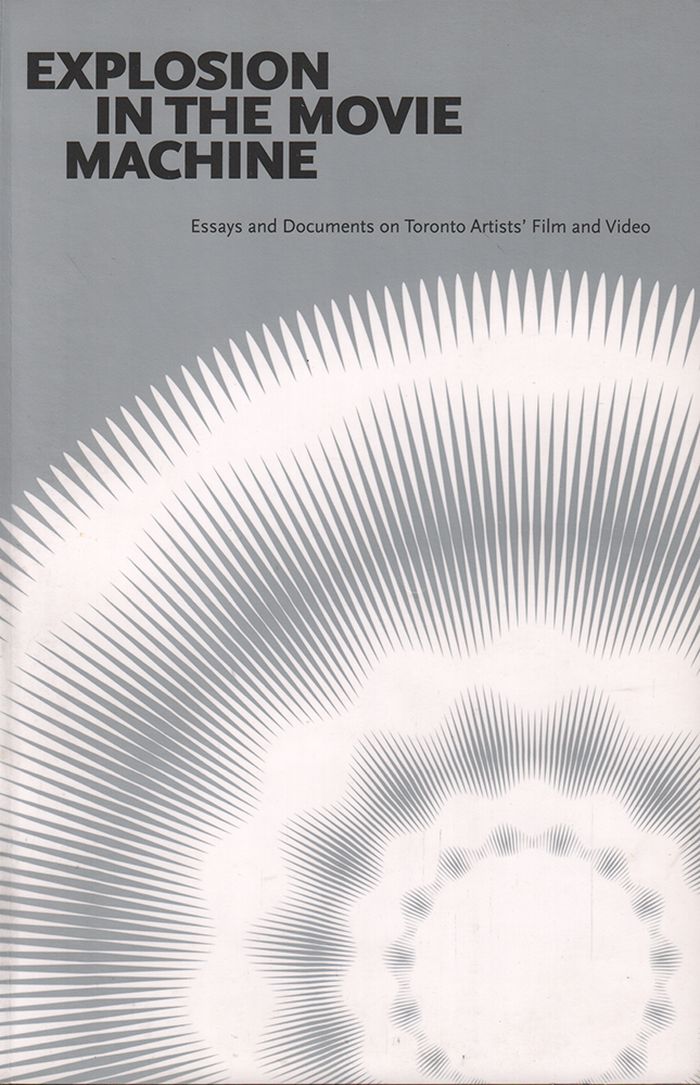livres
Description:
vii, 353 pages : illustrations (some color) ; 27 cm
New Haven : Yale University Press, ©2001.
The prime minister of taste : a portrait of Horace Walpole / Morris R. Brownell.
Actions:
Exemplaires:
Description:
vii, 353 pages : illustrations (some color) ; 27 cm
livres
New Haven : Yale University Press, ©2001.
livres
Description:
xiv, 432 pages : illustrations ; 24 cm.
Baltimore : Johns Hopkins University Press, ©2009.
Structures of change in the mechanical age : technological innovation in the United States, 1790-1865 / Ross Thomson.
Actions:
Exemplaires:
Description:
xiv, 432 pages : illustrations ; 24 cm.
livres
Baltimore : Johns Hopkins University Press, ©2009.
livres
Description:
xiii, 99, [1] pages ; 21 cm.
Cambridge, Mass. : MIT Press, [2000], ©2000
A landscape of events / Paul Virilio ; translated by Julie Rose.
Actions:
Exemplaires:
Description:
xiii, 99, [1] pages ; 21 cm.
livres
Cambridge, Mass. : MIT Press, [2000], ©2000
livres
Description:
335 pages ; 23 cm.
Los Angeles, CA : Semiotext(e) ; Cambridge, Mass. : Distributed by the MIT Press, ©2010.
Archeology of violence / Pierre Clastres ; introduction by Eduardo Viveiros de Castro ; translated by Jeanine Herman.
Actions:
Exemplaires:
Description:
335 pages ; 23 cm.
livres
Los Angeles, CA : Semiotext(e) ; Cambridge, Mass. : Distributed by the MIT Press, ©2010.
livres
Description:
159 pages : color illustrations ; 28 x 31 cm
New York : Aperture Foundation, [2000], ©2000
Mon Afrique : photographs of Sub-Saharan Africa / by Pascal Maitre ; preface by Calixthe Beyala ; chapter texts by Jean-Claude Nouvelière.
Actions:
Exemplaires:
Description:
159 pages : color illustrations ; 28 x 31 cm
livres
New York : Aperture Foundation, [2000], ©2000
livres
$32.95
(disponible sur commande)
Résumé:
Cell phones, automatic teller machines, and the Internet have incontrovertibly become part of our daily lives, indistinguishable from other components of our habitual everyday activity. Life does not seem to have been fundamentally changed by these hi-tech, information-giving tools of convenience--or has it? Have we, unawares, become accustomed to a new way of living? And(...)
Théorie de l’architecture
septembre 2004, Berlin
Dot city : relational urbanism and new media in the Bauhaus Kolleg
Actions:
Prix:
$32.95
(disponible sur commande)
Résumé:
Cell phones, automatic teller machines, and the Internet have incontrovertibly become part of our daily lives, indistinguishable from other components of our habitual everyday activity. Life does not seem to have been fundamentally changed by these hi-tech, information-giving tools of convenience--or has it? Have we, unawares, become accustomed to a new way of living? And how can designers make creative use of these new digital possibilities? This publication of the Fourth International Bauhaus Kolleg--a year-long thematic graduate session run by the Bauhaus Dessau Foundation--offers strategies for employing digital media to integrate the unpredictable and the unplanned into urban existence. "Dot.City" asks and answers many questions: Can the use of information and communication technology counteract the continuous processes of devaluation, the loss of urban identity, the lack of multifunctional networks? Can the activation and implementation of new social techniques of knowledge production compensate for missing economical impulses and functions? How do such processes generate new species of urban values? Is it possible to re-program local social resources using intelligent network technologies? What do urban action areas designed for this purpose look like? And how can urban information spheres and physical urban spaces penetrate each other?
livres
septembre 2004, Berlin
Théorie de l’architecture
livres
Description:
149 pages : illustrations ; 20 cm
Cambridge, Mass. : MIT Press, ©2005.
Shaping things / by Bruce Sterling.
Actions:
Exemplaires:
Description:
149 pages : illustrations ; 20 cm
livres
Cambridge, Mass. : MIT Press, ©2005.
$20.00
(disponible sur commande)
Résumé:
The publication is an anthology of contemporary reflections, scholarly texts, historical documents and visual documentation that examines the depth, brilliance and contradictions of Toronto’s media arts history and ecology. With a focus on artists’ film and video organizations, practices, manifestos, and guiding debates, this volume takes stock of where we’ve been and(...)
septembre 2013
Explosion in the movie machine: essays and documents on Toronto artists' film and video
Actions:
Prix:
$20.00
(disponible sur commande)
Résumé:
The publication is an anthology of contemporary reflections, scholarly texts, historical documents and visual documentation that examines the depth, brilliance and contradictions of Toronto’s media arts history and ecology. With a focus on artists’ film and video organizations, practices, manifestos, and guiding debates, this volume takes stock of where we’ve been and speculates on where we’re headed.
$66.00
(disponible en magasin)
Résumé:
Publishing is experiencing one of the most transformative phases in its history. In "Tactical publishing", a sequel to "Post-digital print", Alessandro Ludovico explores the forces driving this historical phase, highlighting the tremendous opportunities it presents. Our task, he believes, is to develop an alternative publishing system that transcends the dichotomy between(...)
Tactical publishing: Using Senses, Software, and Archives in the Twenty-First century
Actions:
Prix:
$66.00
(disponible en magasin)
Résumé:
Publishing is experiencing one of the most transformative phases in its history. In "Tactical publishing", a sequel to "Post-digital print", Alessandro Ludovico explores the forces driving this historical phase, highlighting the tremendous opportunities it presents. Our task, he believes, is to develop an alternative publishing system that transcends the dichotomy between paper and digital media. He focuses first on the two activities on which publishing is premised—reading and writing (with an emphasis onwriting machines and post-truth in the latter)—and then deconstructs the concept, proposing alternative strategies inspired by recent practices and unconventional uses of technology.
livres
$59.95
(disponible sur commande)
Résumé:
The interplay of electronic textiles and wearable technology, wearables for short, and fashion, design and science is a highly promising and topical subject. Offered here is a compact survey of the theory involved and an explanation of the role technology plays in a fabric or article of clothing. The practical application is explained in detail and numerous illustrations(...)
Fashionable Technology: the intersection of design, science, and technology
Actions:
Prix:
$59.95
(disponible sur commande)
Résumé:
The interplay of electronic textiles and wearable technology, wearables for short, and fashion, design and science is a highly promising and topical subject. Offered here is a compact survey of the theory involved and an explanation of the role technology plays in a fabric or article of clothing. The practical application is explained in detail and numerous illustrations serve as clarification. Over 50 well-known designers, research institutes, companies and artists, among them Philips, Burton, MIT Media Lab, XS Labs, New York University, Hussein Chalayan, Cute Circuit or International Fashion Machines are introduced by means of their latest, often still unpublished, project, and a survey of their work to date. Given for the first time is a list of all the relevant information on research institutes, materials, publications etc. A must for all those wishing to know everything about fashionable technology.
livres
juin 2008, New York
Design d’intérieur

